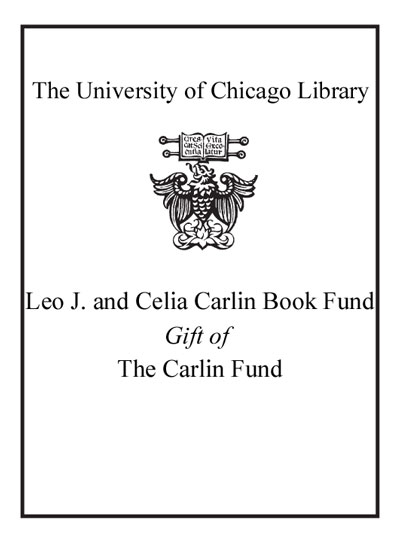Review by Choice Review
Part of the "Empires of the World" series, this encyclopedia offers a comprehensive, well-documented, and illustrated survey of the cultural history of ancient Iran during a period in which the Middle East, the Caucasus, Central Asia, and the Indian subcontinent were unified--from the formation of the Median Empire around 700 BCE to the Muslim Arab conquest in 651, ending the Sasanian Empire. Kia (Univ. of Montana) documents Persia's improvements in agriculture and engineering (e.g., the building of the Suez Canal), the invention of international trade, and the standardization of coinage, among other achievements. He asserts that "Persia was one of the chief civilizing forces of history," bringing order, freedom, justice, peace, and prosperity to a vast region. In his introduction, Kia recounts childhood tours with his parents to the historic places that put in context the cultural events and individuals of Persia, such as the Zoroastrian Emperor Cyrus II (the Great), who declared the first human rights charter and liberated the Jews from the bondage of the Babylonians. For his history, Kia does not rely solely on Roman and Greek writers, who thought of all non-Greeks as enemies and barbarians, but cites Persian primary sources (and reprints 38 texts in volume 2). His 241 entries, organized thematically (and within sections, alphabetically) feature clear head notes and copious see also references and further readings. His essays treat, in varying length, topics that span Persian history and politics, the arts and architecture, geography, warrior and priestly castes, royal nobility, legendary kings, heroes and villains, historians, artists, and administrative and military organizations. The author also discusses cultural events, calendars, and festivals, and provides a chronology of ancient Iran and a comprehensive index. A useful introduction for beginning researchers at all levels. Summing Up: Recommended. High school, community college, and undergraduate students; general readers. --Parvin Kujoory, Collin College
Copyright American Library Association, used with permission.
Review by Booklist Review
The Persian Empire is so ancient, our knowledge of its culture and daily life is limited. Often our insights are gained by historians whose governments were at war with Persia necessarily providing us with a distorted view of the empire and its citizens. This work explores greater Persia from the seventh century BCE to the first century CE, encompassing its pre-Islamic glory days. The book is divided into 12 thematic sections. Each section begins with an essay followed by alphabetically-arranged entries. The first two sections focus on important geographical locations (primarily cities and provinces). The next section explores culture. The following six sections focus on Persian kings and queens through the various dynasties. The last of these sections broadens to include legendary personalities and organizations. There are biographical thumbnails of ancient Persian luminaries. The work ends with an outline of religious beliefs and the various Persian gods. Entries are cross-referenced and contain lists of references for those interested in additional research. An appendix containing translations of 38 primary documents follows the encyclopedia entries. Another useful appendix is a glossary of selected terms. This book is a good reference for high-school and college students who are interested in Persian rulers and dynastic histories.--Hassanali, Muhammed Copyright 2016 Booklist
From Booklist, Copyright (c) American Library Association. Used with permission.
Review by Library Journal Review
Kia (Eastern & North African history, director, Central & Southwest Asian Studies Ctr., Univ. of Montana) offers an introduction to the study of the pre-Islamic civilization of Greater Iran for users with limited knowledge about the subject. Its geographic focus is limited to regions that were populated by ancient Iranians in antiquity and to countries and territories ruled by empires of the Medes, Achaemenids, Seleucids, Parthians, and Sasanians of pre-Islamic Iran-a much larger political and cultural territory than present-day Iran. The work's 241 entries cover the time span of the arrival of Iranians on the Eurasian steppes and the Iranian plateau to the fall of the Sasanian Empire in 651 CE. Kia starts off the set with an enlightening overview of the empire's most important historical epochs. What follows are 12 chapters on the main ideas, religious concepts, personages, and events of ancient Iran. Chapters consist of short essays outlining their general themes and alphabetically arranged entries of one to two pages with suggestions for further reading. Although not designed as an all-inclusive synopsis of ancient Iran's history and culture, the work effectively and succinctly provides a broad introduction to pre-Islamic Iranian culture for its target audience. VERDICT These two volumes more than adequately fill a resource gap on the Persian Empire for readers and researchers looking to develop a general understanding on the topic.-Rob Tench, Old Dominion Univ. Lib., Norfolk, VA © Copyright 2016. Library Journals LLC, a wholly owned subsidiary of Media Source, Inc. No redistribution permitted.
(c) Copyright Library Journals LLC, a wholly owned subsidiary of Media Source, Inc. No redistribution permitted.
Review by Choice Review
Review by Booklist Review
Review by Library Journal Review

